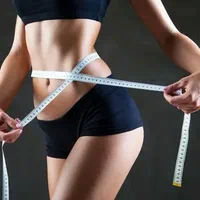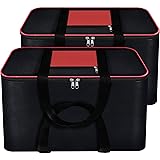Liposuction has become an increasingly popular method for body contouring and fat removal, especially in vibrant cities like Abu Dhabi. With various techniques available, choosing the right liposuction method can be overwhelming. Understanding each technique’s pros and cons is essential in making an informed decision tailored to your body and goals. This article will explore the different Liposuction in Abu Dhabi ( شفط الدهون في أبوظبي ) techniques, helping you determine which is best for your needs.
Understanding Liposuction
Liposuction is a cosmetic surgery procedure designed to remove excess fat from specific areas of the body. It can enhance body contours and improve proportions. While it’s not a weight-loss solution, liposuction can help remove stubborn fat deposits that do not respond to diet and exercise.
Popular Liposuction Techniques
Several liposuction techniques are available in Abu Dhabi, each with unique benefits and considerations. Understanding these techniques will guide you in selecting the best option for your desired results.
1. Tumescent Liposuction
Tumescent liposuction is one of the most common techniques used today. It involves injecting a solution containing saline, lidocaine, and epinephrine into the targeted areas before fat removal.
Benefits:
- Less Bleeding: The epinephrine constricts blood vessels, minimizing bleeding during the procedure.
- Local Anesthesia: The injected lidocaine provides pain relief, allowing for the procedure to be performed under local anesthesia.
- Precision: Surgeons can more easily remove fat in a controlled manner.
Considerations:
- Recovery Time: Although recovery is generally quick, patients may experience swelling and bruising for several weeks.
2. Laser-Assisted Liposuction (SmartLipo)
Laser-assisted liposuction uses laser energy to liquefy fat before removal. This technique is popular for its ability to tighten skin in addition to removing fat.
Benefits:
- Minimally Invasive: The procedure uses smaller incisions, leading to reduced scarring.
- Skin Tightening: The heat from the laser stimulates collagen production, enhancing skin firmness.
- Quick Recovery: Most patients experience less downtime compared to traditional liposuction.
Considerations:
- Limited Fat Removal: This method is typically more suitable for small areas due to its technique and the amount of fat that can be safely removed.
3. Ultrasound-Assisted Liposuction (UAL)
Ultrasound-assisted liposuction employs ultrasound waves to break down fat cells before extraction. This technique is often recommended for fibrous areas, such as the back or male breasts.
Benefits:
- Efficient Fat Breakdown: The ultrasound energy effectively disrupts fat cells, allowing for easier removal.
- Effective for Larger Areas: UAL can target larger areas of the body, making it a good choice for extensive fat removal.
Considerations:
- Risk of Thermal Injury: The heat generated during the procedure can potentially harm surrounding tissues if not carefully managed.
4. Power-Assisted Liposuction (PAL)
Power-assisted liposuction utilizes a vibrating cannula to break up fat cells during removal. This method can speed up the process and reduce fatigue for the surgeon.
Benefits:
- Reduced Trauma: The vibrating cannula minimizes damage to surrounding tissues, potentially leading to less bruising.
- Faster Procedure: PAL can shorten the surgery time, making it more efficient for both the surgeon and the patient.
Considerations:
- Anesthesia Needs: Local anesthesia is typically required, but some patients may prefer sedation for comfort.
5. Suction-Assisted Liposuction (SAL)
Suction-assisted liposuction is the traditional form of liposuction, where a vacuum-like device is used to remove fat. While effective, it is less commonly used with the advent of newer techniques.
Benefits:
- Proven Technique: As a well-established method, it has a long history of success and reliability.
- Versatile: SAL can be applied to various body areas and types of fat.
Considerations:
- Longer Recovery: Compared to newer techniques, SAL may involve a longer recovery time.
Factors to Consider When Choosing a Technique
Selecting the appropriate liposuction technique involves several factors:
1. Personal Goals
Consider what you want to achieve with liposuction. Are you looking to remove a small area of fat or seeking comprehensive body contouring? Understanding your goals will guide you toward the most suitable technique.
2. Body Type
Your body type and the areas you want to target will impact your choice. For instance, patients with dense, fibrous fat may benefit from UAL, while those wanting minimal downtime may prefer laser-assisted methods.
3. Surgeon’s Expertise
Choose a board-certified surgeon experienced in various liposuction techniques. A skilled professional will assess your body and recommend the best approach for your individual needs.
4. Recovery Time
Consider how much time you can dedicate to recovery. Techniques with minimal downtime, such as laser-assisted liposuction, may be more appealing for busy individuals.
5. Cost
Costs can vary significantly between techniques. While more advanced methods may have higher upfront costs, they might offer additional benefits, such as shorter recovery times or better skin tightening.
Conclusion
Choosing the right liposuction technique in Abu Dhabi requires careful consideration of your individual needs and goals. By understanding the various options available, you can make an informed decision that aligns with your desired outcomes. Consulting with a qualified surgeon will provide valuable insights and help you navigate the options to achieve the best possible results. With the right approach, liposuction can be a transformative experience, enhancing your confidence and body image.
TEKCOOL Wall Clock 12" Silent Quartz Decorative Latest Wall Clock Non-Ticking Classic Clock Battery Operated Round Easy to Read for Room/Home/Kitchen/Bedroom/Office/School - Analog, Plastic Grey Gold
₹543.00 (as of 12 March, 2025 11:42 GMT +05:30 - More infoProduct prices and availability are accurate as of the date/time indicated and are subject to change. Any price and availability information displayed on [relevant Amazon Site(s), as applicable] at the time of purchase will apply to the purchase of this product.)Homestrap Set of 6 Non-Woven Printed Saree Cover/Cloth Storage/Wardrobe Organizer For Clothes with Transparent Window (Grey)(Shark Tank Featured) 45cmx33cmx22cm
₹349.00 (as of 12 March, 2025 11:47 GMT +05:30 - More infoProduct prices and availability are accurate as of the date/time indicated and are subject to change. Any price and availability information displayed on [relevant Amazon Site(s), as applicable] at the time of purchase will apply to the purchase of this product.)Ganesh Spark Gas Lighter for Kitchen Use Restaurants Metal Gas Stove Lighter Regular Size Easy Grip Long Lasting, Rust Proof
₹69.00 (as of 12 March, 2025 11:47 GMT +05:30 - More infoProduct prices and availability are accurate as of the date/time indicated and are subject to change. Any price and availability information displayed on [relevant Amazon Site(s), as applicable] at the time of purchase will apply to the purchase of this product.)Storite 2 Pack Moisture Proof Nylon Large Size Underbed Storage Bag For Clothes (54 x 46 x 28 cm) - Black, Rectangular
₹499.00 (as of 12 March, 2025 11:47 GMT +05:30 - More infoProduct prices and availability are accurate as of the date/time indicated and are subject to change. Any price and availability information displayed on [relevant Amazon Site(s), as applicable] at the time of purchase will apply to the purchase of this product.)atomberg Renesa Enzel 1200mm BLDC Ceiling Fan with Remote Control | BEE 5 star Rated Energy Efficient Ceiling Fan | High Air Delivery with LED Indicators| 2 Year Warranty (Gloss White)
₹3,299.00 (as of 12 March, 2025 11:47 GMT +05:30 - More infoProduct prices and availability are accurate as of the date/time indicated and are subject to change. Any price and availability information displayed on [relevant Amazon Site(s), as applicable] at the time of purchase will apply to the purchase of this product.)Discover more from The General Post
Subscribe to get the latest posts sent to your email.





